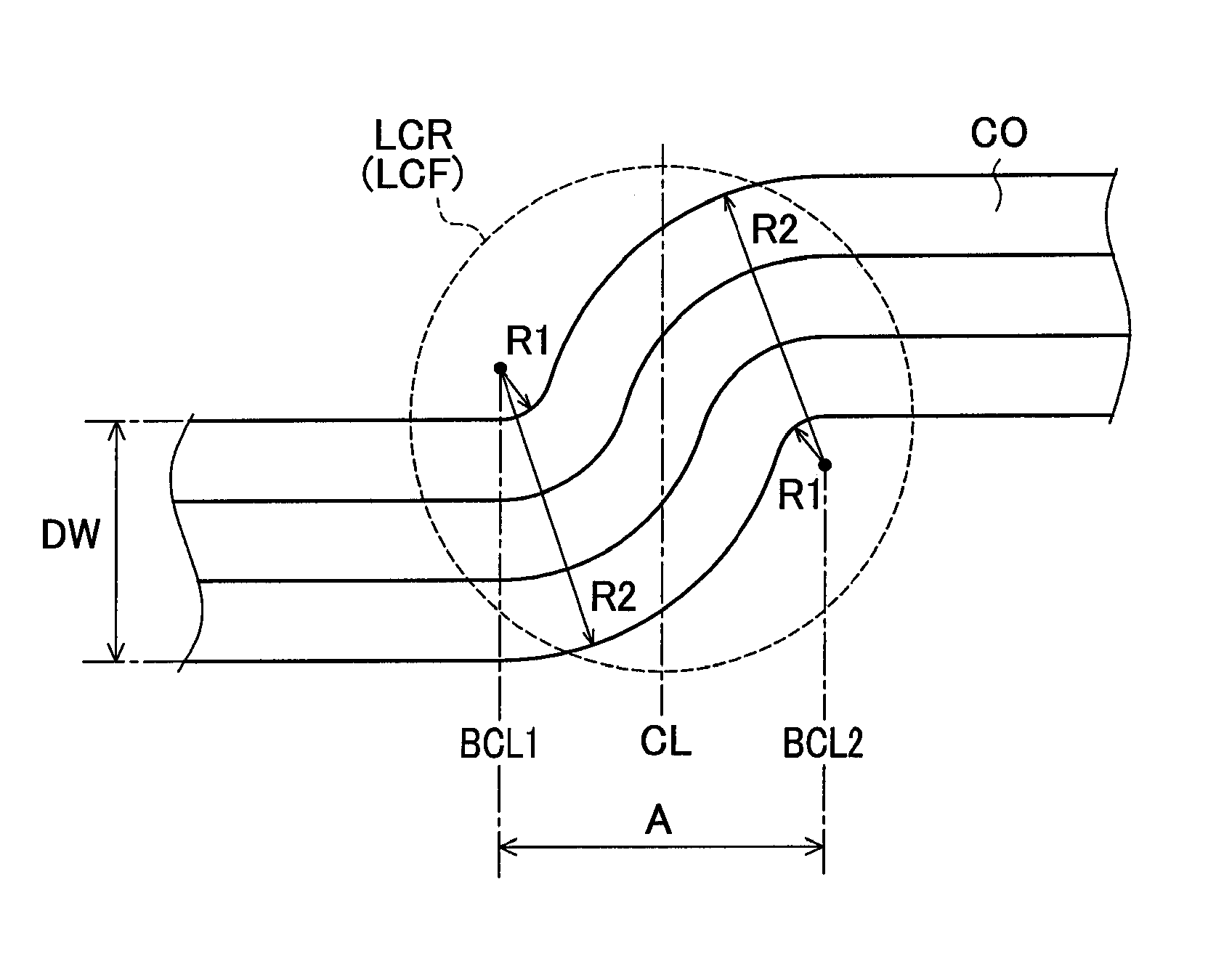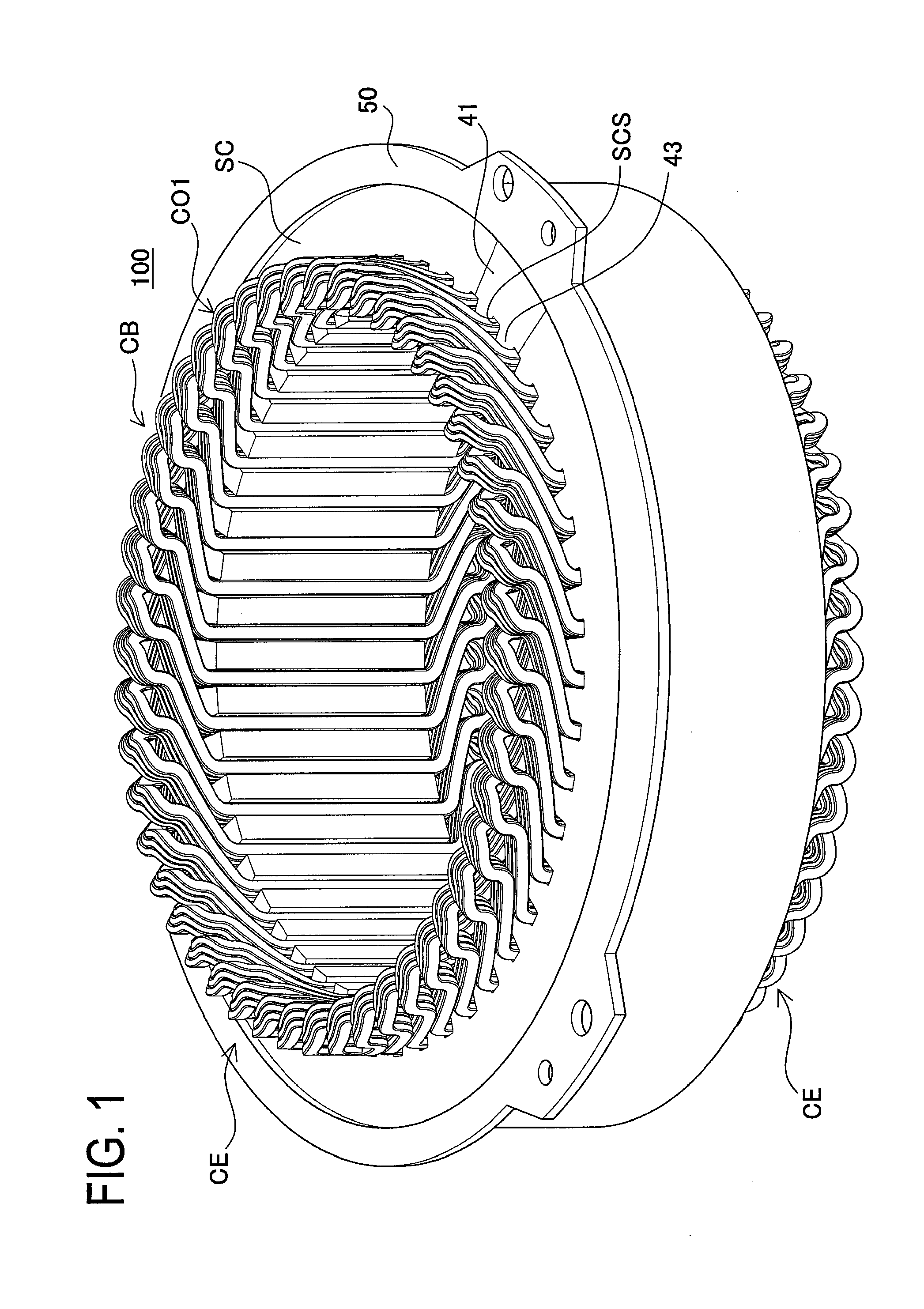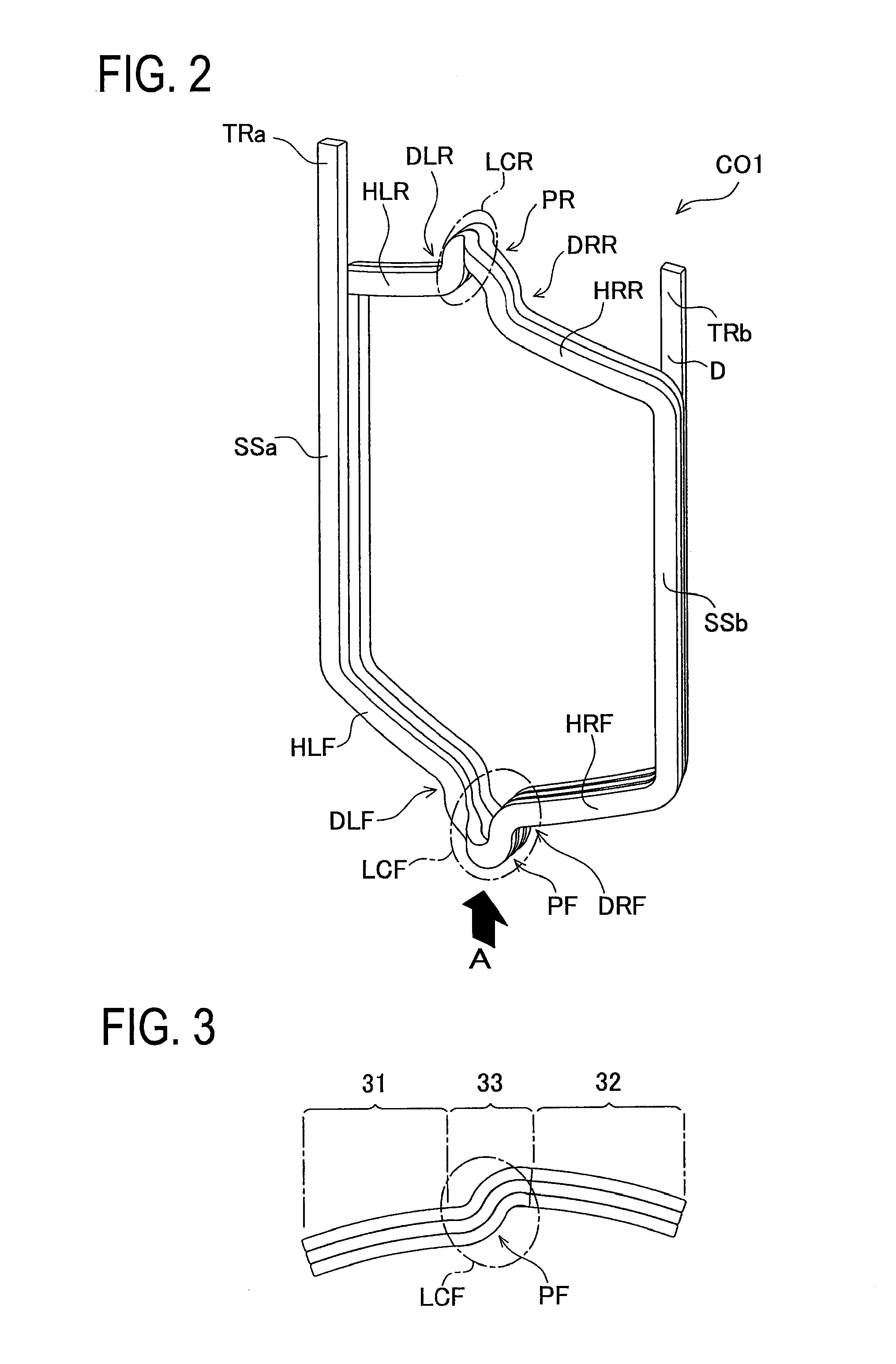Stator
a technology of stator and spherical rod, which is applied in the direction of windings, dynamo-electric components, synchronous machines, etc., can solve the problems of high power demand and downsizing of motors to be mounted in vehicles, and achieve the effects of shortening the coil end, avoiding interference, and avoiding interferen
- Summary
- Abstract
- Description
- Claims
- Application Information
AI Technical Summary
Benefits of technology
Problems solved by technology
Method used
Image
Examples
first embodiment
[0122]FIG. 1 is a perspective view of a stator in the first embodiment.
[0123]A stator 100 includes protrusion-formed coils CO1, a split stator core SC, and an outer ring 50. It is to be noted that a terminal stand 55 and bus bars BB shown in FIG. 17 should be provided in a coil end CE to complete the stator 100 but they are not illustrated in FIG. 1 for facilitating the explanation of lane change.
[0124]FIG. 2 is a perspective view of each protrusion-formed coil. FIG. 3 is a lower view of the protrusion-formed coil, seen from an arrow A in FIG. 2.
[0125]The protrusion-formed coil CO1 is made, as shown in FIG. 2, by winding a flat rectangular conductor (conductor wire) D in three turns by edge-wise bending, so that a first terminal portion TRa and a second terminal portion TRb are provided.
[0126]The protrusion-formed coil CO1 further includes a first oblique side portion HLR, a second oblique side portion HRR, a third oblique side portion HLF, and a fourth oblique side portion HRF. In ...
second embodiment
[0184]A stator 100 in the second embodiment is almost the same in structure as the stator 100 in the first embodiment, excepting that a one-side protrusion-formed coil CO3 in the second embodiment corresponding to the protrusion-formed coil CO1 in the first embodiment is slightly different in structure of a coil end CE from the protrusion-formed coil CO1.
[0185]FIG. 12 is a perspective view of the one-side protrusion-formed coil in the second embodiment.
[0186]The one-side protrusion-formed coil CO3 includes, as shown in FIG. 12, a first oblique side portion HLR, a second oblique side portion. HRR, a third oblique side portion HLF, and a fourth oblique side portion HRF. A lead-side protrusion PR is formed in an extension of the first oblique side portion HLR. The second oblique side portion HRR is formed linearly to a lead-side lane-change portion LCR. A non-lead-side protrusion PF is formed in an extension of the third oblique side portion HLF. The fourth oblique side portion HRF is ...
third embodiment
[0195]A stator 100 in the third embodiment is substantially identical in structure to the stator 100 in the second embodiment, excepting that a one-side protrusion-formed coil CO4 in the third embodiment corresponding to the one-side protrusion-formed coil CO3 is slightly different in structure of a coil end CE from the coil CO3.
[0196]FIG. 15 is a perspective view of the one-side protrusion-formed coil in the third embodiment.
[0197]The one-side protrusion-formed coil CO4 is formed, as shown in FIG. 15, with a first oblique side portion HLR, a second oblique side portion HRR, a third oblique side portion HLF, and a fourth oblique side portion HRF. A lead-side protrusion PR is formed in an extension of the second oblique side portion HRR and the first oblique side portion HLR is formed linearly to a lead-side lane-change portion LCR. A non-lead-side protrusion PF is formed in an extension of the fourth oblique side portion HRF and the third oblique side portion HLF is formed linearly ...
PUM
 Login to View More
Login to View More Abstract
Description
Claims
Application Information
 Login to View More
Login to View More - R&D
- Intellectual Property
- Life Sciences
- Materials
- Tech Scout
- Unparalleled Data Quality
- Higher Quality Content
- 60% Fewer Hallucinations
Browse by: Latest US Patents, China's latest patents, Technical Efficacy Thesaurus, Application Domain, Technology Topic, Popular Technical Reports.
© 2025 PatSnap. All rights reserved.Legal|Privacy policy|Modern Slavery Act Transparency Statement|Sitemap|About US| Contact US: help@patsnap.com



